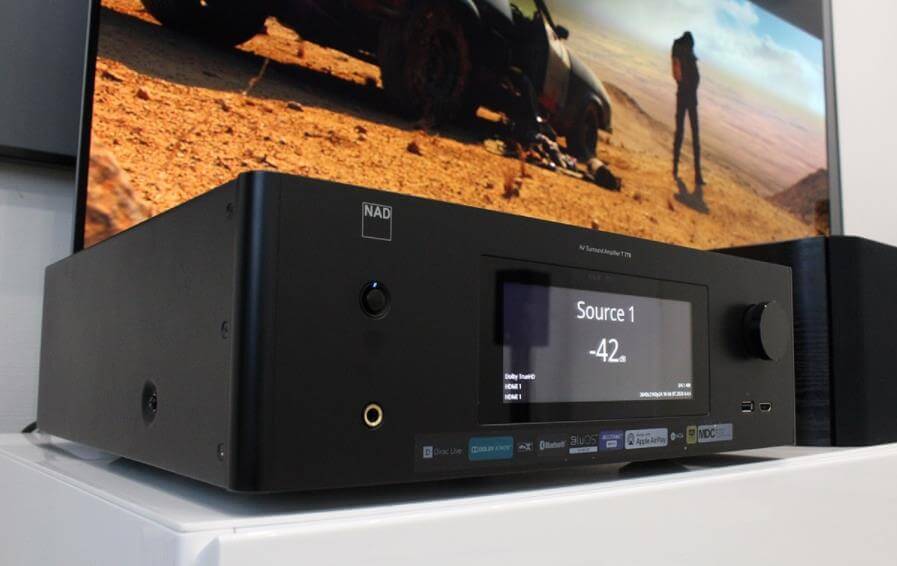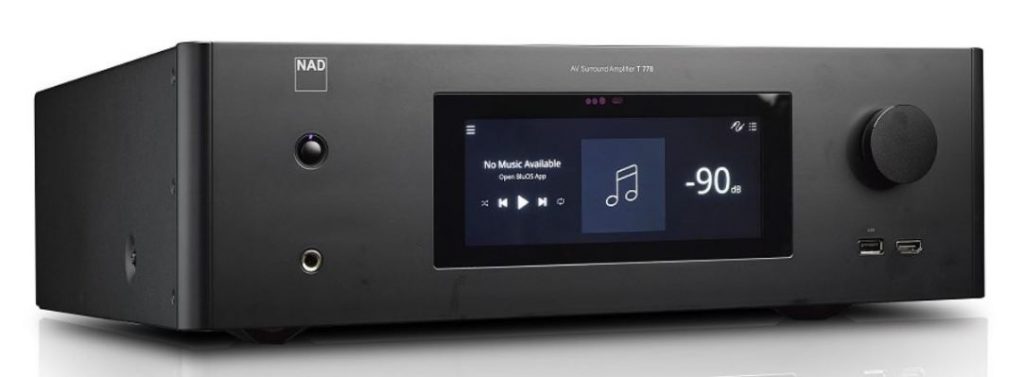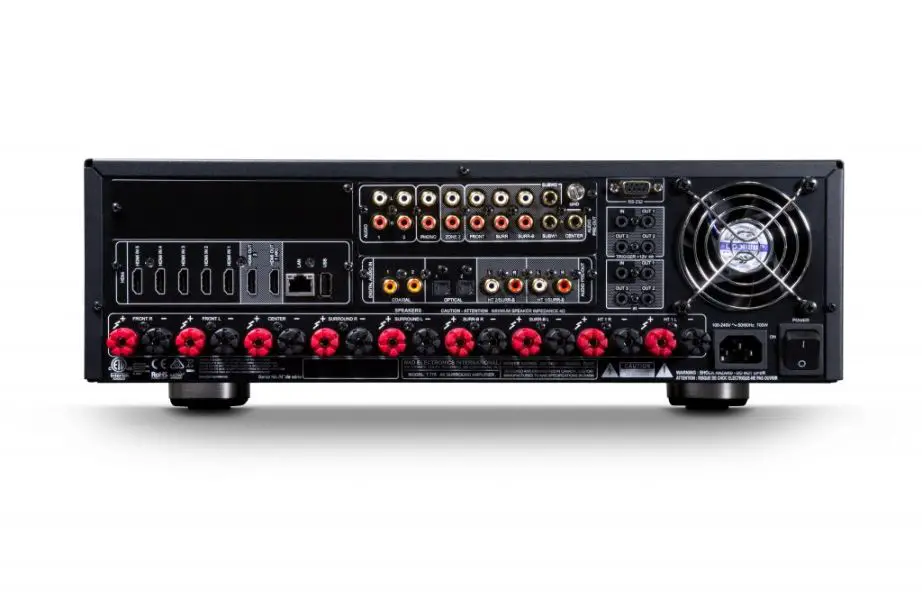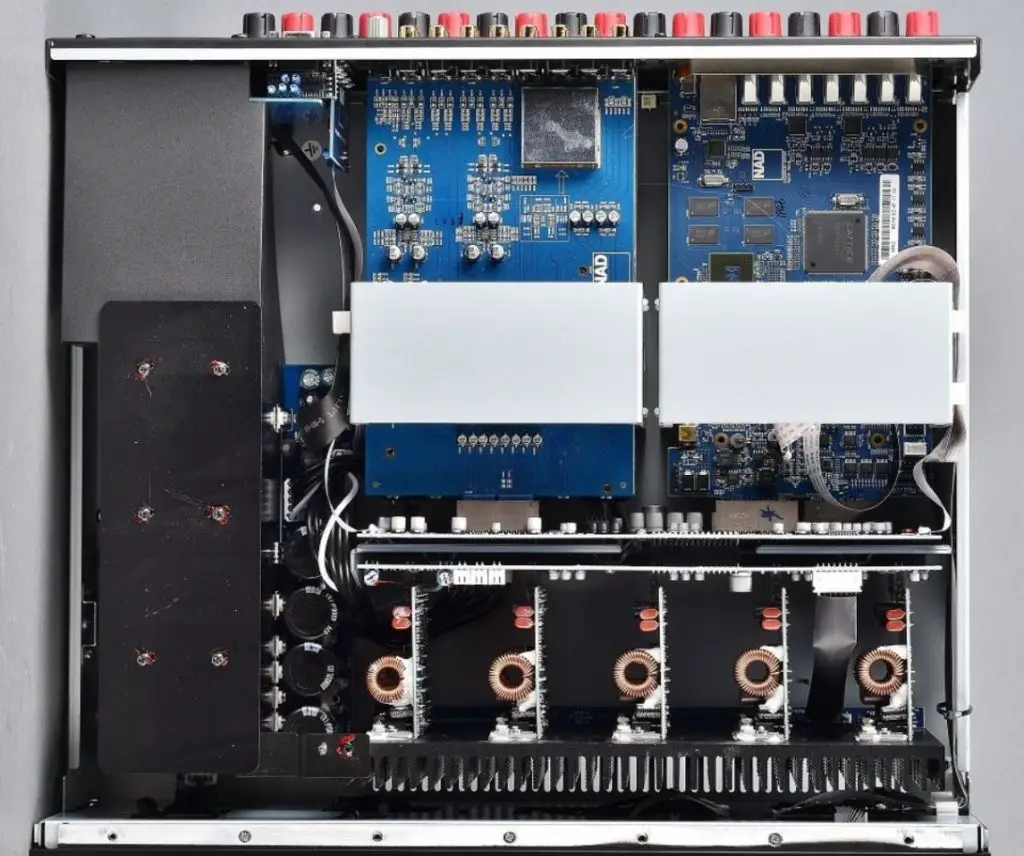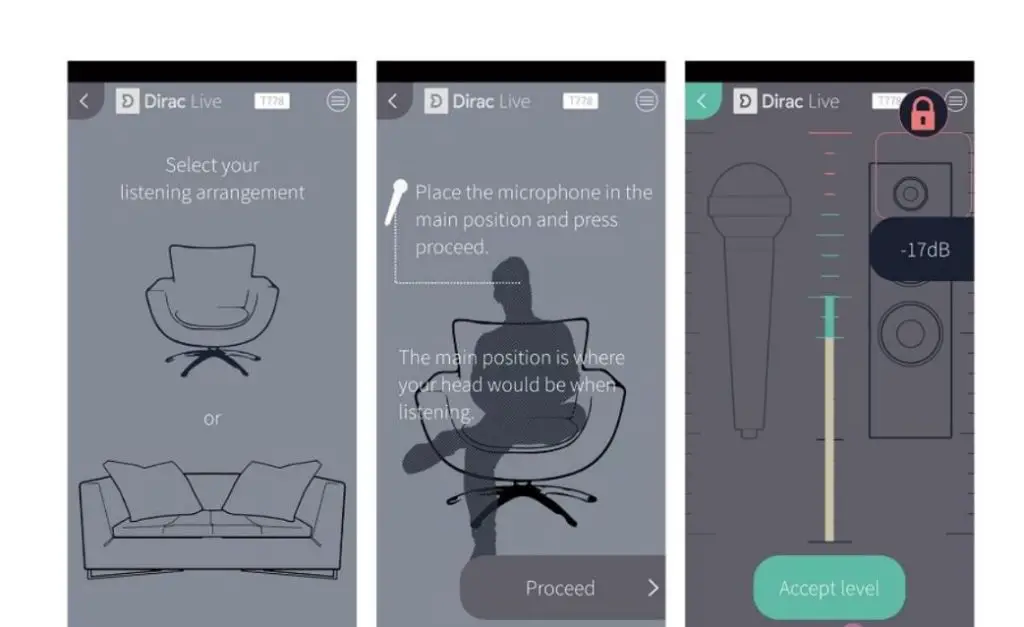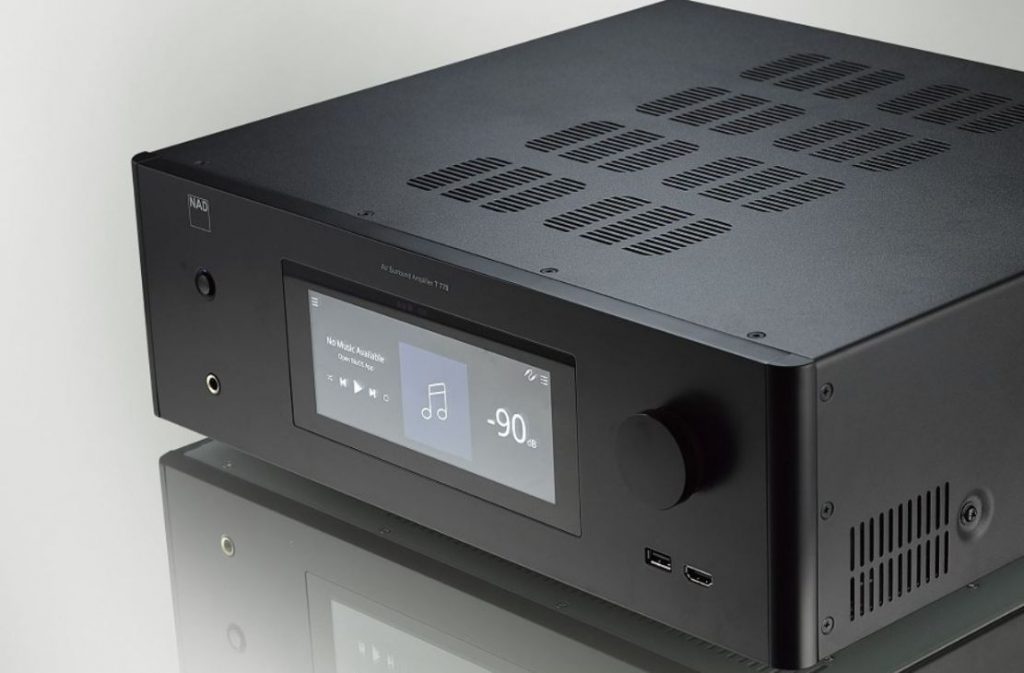NAD T778 9.2-Channel Home Theater AV Receiver Review
The NAD T778 receiver is one of the brand’s reference-level receivers. It features hybrid digital amplifier technology across all nine channels, giving it a total power output of 85 watts per channel and 165 watts for dynamic peaks. However, this should be more than enough to power most home theater loudspeakers on the market right now including those that are difficult to drive like some tower models with multiple tweeters or woofers in different ranges which require separate amplification circuits.
Design
The NAD T778 AV receiver is a heavy, 26.7-pound audio system that measures 13.3 inches wide by 5.9 inches high by 16 inches deep with the power button and headphone jack on the left side of it upfront and USB/HDMI inputs to its right as well in addition to having a customizable touch screen at a center stage which resembles like one from the m10 model only more advanced instead.
There are six different types of inputs on the back, one for RCA audio input, a phono input (that is specifically used to connect a turntable), zone 2 pre-out around the back that can be connected with speakers in another room, and unbalanced pre-outs for all nine channels.
There are also coaxial and optical inputs if you want them too. And there are five HDMI ports that support 4K HDR videos along with two outputs: one supporting eARC(Enhanced ARC) while only port 1 has support to pass through 4k hdr contents.
This receiver has what they call MDC or modular design construction. That’s why there is an empty space here. If you wanted to add additional channels, upgrade your HDMI board, or anything like that in the future all you’d have to do is unscrew this and pop it out of where it currently sits, and put a new module in its place!
The NAD T778 sounds similar to adding sound cards on a PC as well because both procedures are just upgrading hardware by replacing modules instead of having to buy whole units again for upgrades. The manufacturer says that the MDC should make updating their device simpler without necessarily needing to replace everything if only certain things need changing.
Here on the right side is a cooling fan to keep internal components cool. A Class D amplifier powers this T778, which has nine channels with an 85-watt rating and all channels driven. This manufacturer does not give you inflated numbers based on only one or two speakers being used as many other products do because they believe in giving honest ratings for their product’s capability instead of misleading customers into thinking it will be louder than what it actually can handle.
The NAD T778 receiver supports high-resolution audio through BluOS and Dirac Live which is one of the best room correction solutions. There’s also support for Dolby Atmos and DTS-X, as well as network music streaming via direct connect or MQA decoding.
Outstanding Touchscreen Feature
The NAD T 778 is one of the most beautiful-looking AV receivers I have ever seen. The designers’ focus on that large touchscreen gives it a high-end look, despite its low price tag. In truth, adding the volume knob was more about making sure customers know NAD still cares about quality over quantity than anything else.
Let’s talk about that touch screen. Not only is it not a gimmick, but you can set up every facet of the T778’s performance through this convenient feature. No remote or connected TV is required. It means no more having your entertainment options limited by faulty equipment and out-of-reach remotes – just one easy step to getting exactly what you want from your media experience with ease.
The touchscreen on the NAD T778 is really effective. It’s more responsive than a traditional remote, and it makes using this receiver much easier. If you’ve used a touch screen before, going back to one that isn’t will be difficult at first because of how convenient they are.
Dirac Live Feature
To connect the NAD T778 receiver to my list of BluOS devices, I had to use a dongle. But using this attachment was easy and wasn’t complicated at all! The app is fantastic because it lets me stream music from services like Spotify or Tidal, plus it gives access to any other stored local music on my home network.
The app even allows some essential control over the av receiver itself. I’m talking about things like input selection and volume, but nothing much beyond that. You’re also going to need the dongle to run Dirac Live, a proprietary NAD receivers’ auto room calibration software used for playback optimization in different home environments such as surround sound testing or speaker/distance measurements from your seated listening position(s).

You’ll need a laptop or tablet to complete this step. Luckily Dirac Live is compatible with both Apple and Windows machines, so you won’t have any compatibility issues. The NAD receiver enables up to three unique sets of filters that allow for home theater listening as well as two-channel playback: whatever your preference may be.
I tested nad’s new Dirac Live with a variety of loudspeakers, primarily our Jamo home theater anchored by the s809 towers. Dirac Live isn’t as plug-and-play as Odyssey, so there may be a slight learning curve. With this program now we tested it with a variety of speakers including our Jamo home theater which has S-8 series towers anchoring it to see how well they work together.
I listen to music on Tidal, and the sound quality is great. I tested it with Dirac enabled or disabled using my NAD receiver; both versions sounded good! This was especially nice when we were watching something specific because then I could switch between presets depending on what kind of content (e.g., movies vs TV shows) I wanted to watch.
Sound Performance
The NAD T778’s hybrid digital amplifier topology allows it to customize the sound of connected speakers, no matter what their type. This gives a smooth and mellow tone with reasonable control over bass and high frequencies through NAD’s signature sounds while Dirac does not impact this at all. However, users who opt into using Dirac might experience an increase in lower mid-range and bass output from the receiver.
The NAD T778 receiver produces deep bass, but it’s not the deepest available. This can be attributed to some integrated amps in my house that manage greater extension than what I get from our Jamo speakers. However, for an AV receiver like this one, there are many benefits: taut and textural (rather than mushy). If you need more low-frequency support when watching movies or listening to music on your own equipment at home then adding subwoofers would work fine with NAD products such as nad t778.
I love the NAD’s mid-range. It can match well with a variety of speakers and soundtracks, making vocals or music feel more present in an enjoyable way rather than artificially forward like some other amps I’ve used.
I think you’re going to find that the NAD T778 has an organic quality and its tone is smooth. While this might make some details more difficult to hear, I do believe that this creates a laid-back vibe for your listening experience.
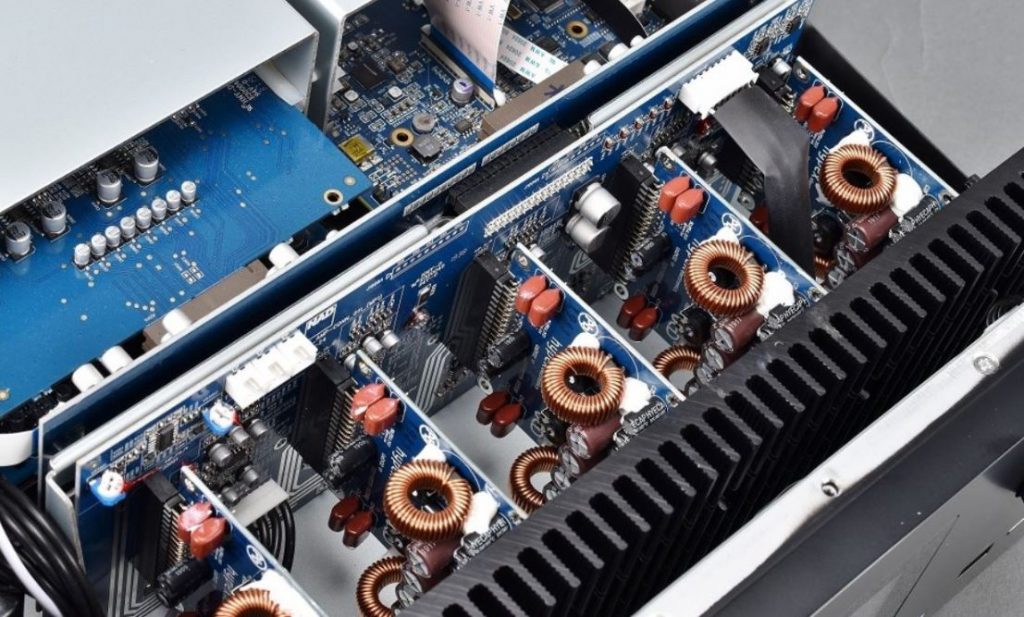
I was impressed with the NAD’s high-frequency response. I found it to be balanced overall, not one element standing out from another. It may have leaned slightly towards seductive but this balance is what stood out more than anything else about its frequency range.
The NAD T778 receiver is all just wholly composed. High frequencies are airy and detailed with almost zero edginess which makes them great for speakers like Jamo, known to be a little bit more on the livelier side. At high volumes, they never become fatiguing so it’s overall an excellent choice if you have loudspeakers that can handle this type of output power range without risk of fatigue or distortion.
Dynamic
As for the rest of the NAD 778’s performance, it is satisfying. However, I will admit that you may have to turn things up a little bit in order for them to sound their best. In terms of two-channel playback and soundstage definition delineation throughout are fantastic with excellent results on both accounts.
While it may not be the best separate component, I think for the vast majority of listeners related to the soundstage that this receiver comes off as high-end. This is among other receivers in its class-leading category. For surround sound specifically Dolby tracks, I don’t know if there’s a better option out there because these are pretty much my favorite features on an AV Receiver while using home theater speakers.
Conclusion
The NAD T778 receiver is one of the best AVR’s I’ve ever experienced. Dirac Live makes my room sound top-notch, and it throws out a huge sound stage that puts other receivers to shame. People complain about lesser receiver brands lacking in top channels. however, the NAD receiving similar performance compared to much more expensive processors proves this wrong.
High channel effects are great because they stand out against the other surrounding channels. It should be effortless and sound like a natural bubble of sound, not something you have to try and listen for.
I think NAD’s processing and having Dirac onboard separate the receiver from other similarly priced options. This is a top-tier receiver with some future-proof ability, and to my ears, one of the best sounding AVRs out there now. If you’re thinking about upgrading to a new receiver this year and care about your audio, then the 778 should be in your top two choices. It’s a fantastic-sounding AVR!
